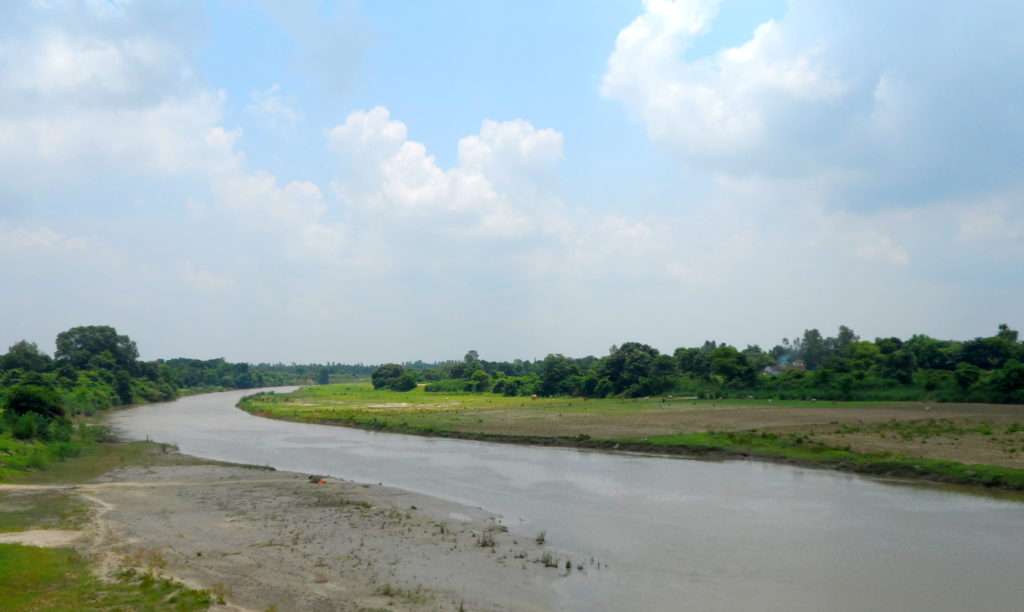River length: 940 km
Basin area: 30,437 sq km
Population in basin: 40 million
States in basin: Uttar Pradesh

Major cities using water
Lucknow (pop: 2.8 million), Jaunpur (pop: 168,000), Sultanpur (pop: 108,000)
River Depletion
- Dry season drought risk: Low
- Water depletion: 32%
- Monsoon flood risk: Extremely High
- Seasonal variability of water levels: Extremely High
Economic & Environmental Significance
- The Gomti is one of the Ganga’s most important tributaries. Over 2 million hectares of land are under cultivation in the basin.
- Forests cover just 4.10% of the Gomti basin’s area, compared to an average of 9.01% in Uttar Pradesh. Studies suggest that the trees should cover at least thrice this area. Tree plantation along riversides is therefore an urgent necessity.
Spiritual & Cultural Significance
The Gomti and its tributaries are closely associated with the Ramayana and Mahabharata. The river is considered the daughter of Sage Vashishta, and the Naimisha forest – where the Mahabharata was first narrated – was located along the river’s banks.
Two ancient Shiva temples that are located along the river’s banks are the Ekkotarnath Mahadev and the Sunasirnath Mahadev temples. There are many lingas here, one of which is about eight feet down, at the bottom of a kund or sacred pool of water. These lingas are worshipped every Shivaratri.
References
- http://www.currentscience.ac.in/Volumes/108/03/0434.pdf
- http://documents.worldbank.org/curated/en/983071491924854124/Major-Ganga-sub-basins-water-balance-analysis-report
- http://shodhganga.inflibnet.ac.in/bitstream/10603/149040/11/11_chapter%204.pdf
- http://www.earthscienceindia.info/pdfupload/tech_pdf-1327.pdf
- Photo Credit: https://commons.wikimedia.org/wiki/File:Gomati_River.JPG